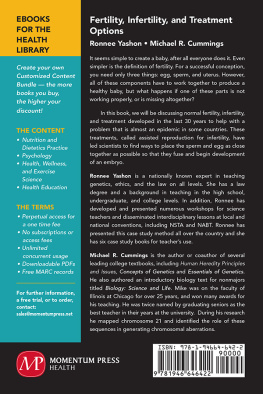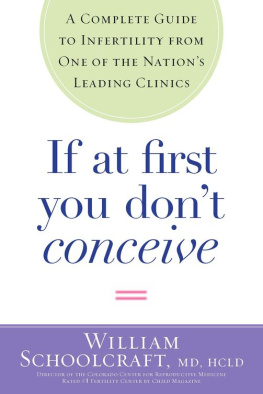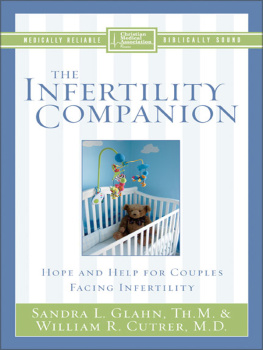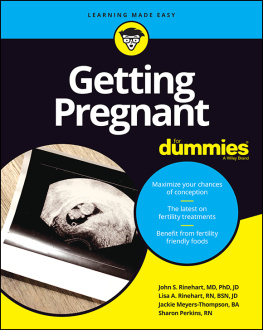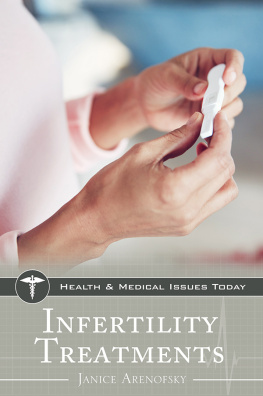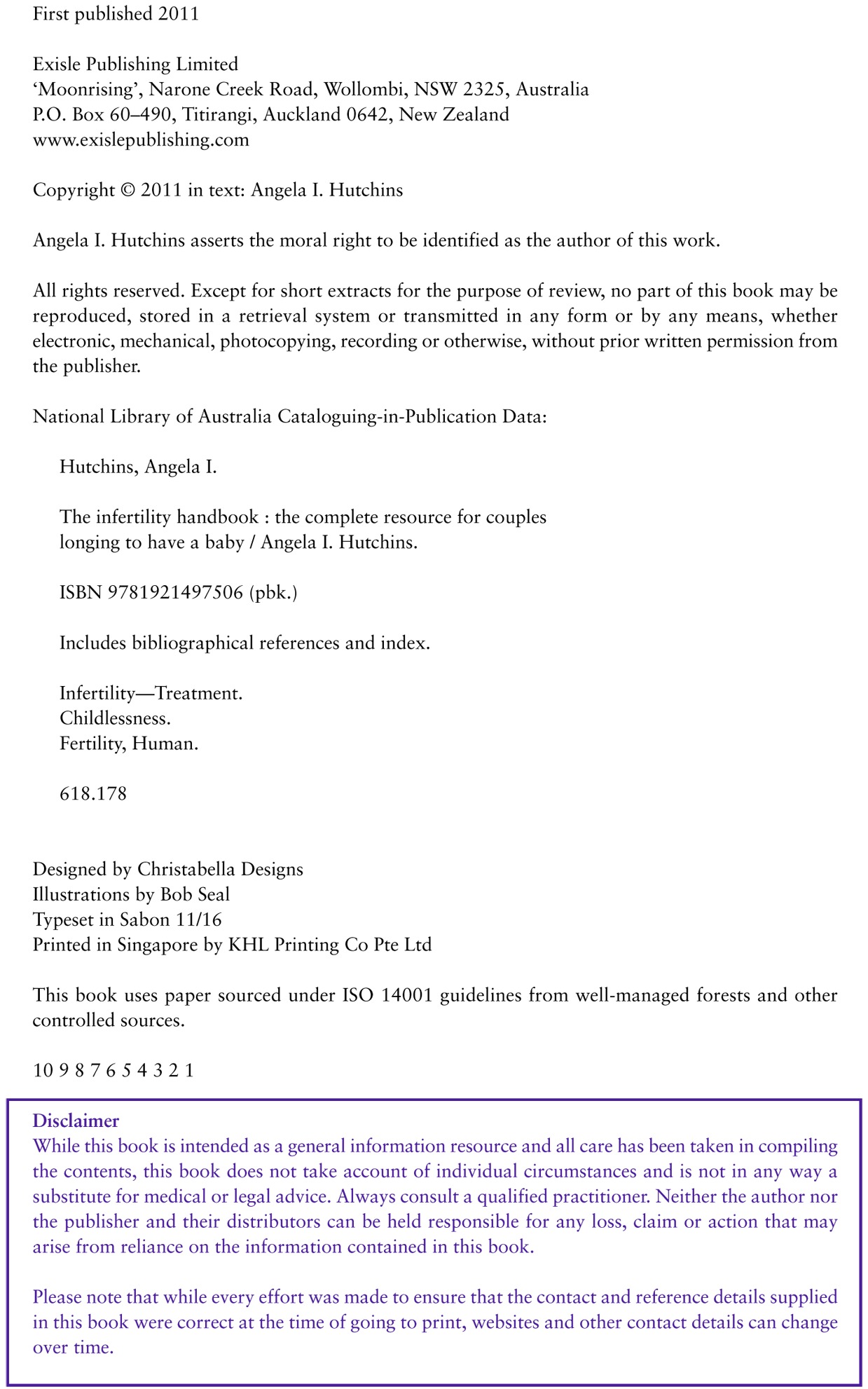Angela I. Hutchins - The Infertility Handbook: The complete resource for couples longing to have a baby
Here you can read online Angela I. Hutchins - The Infertility Handbook: The complete resource for couples longing to have a baby full text of the book (entire story) in english for free. Download pdf and epub, get meaning, cover and reviews about this ebook. year: 2011, publisher: Exisle Publishing Pty Ltd, genre: Children. Description of the work, (preface) as well as reviews are available. Best literature library LitArk.com created for fans of good reading and offers a wide selection of genres:
Romance novel
Science fiction
Adventure
Detective
Science
History
Home and family
Prose
Art
Politics
Computer
Non-fiction
Religion
Business
Children
Humor
Choose a favorite category and find really read worthwhile books. Enjoy immersion in the world of imagination, feel the emotions of the characters or learn something new for yourself, make an fascinating discovery.

- Book:The Infertility Handbook: The complete resource for couples longing to have a baby
- Author:
- Publisher:Exisle Publishing Pty Ltd
- Genre:
- Year:2011
- Rating:5 / 5
- Favourites:Add to favourites
- Your mark:
The Infertility Handbook: The complete resource for couples longing to have a baby: summary, description and annotation
We offer to read an annotation, description, summary or preface (depends on what the author of the book "The Infertility Handbook: The complete resource for couples longing to have a baby" wrote himself). If you haven't found the necessary information about the book — write in the comments, we will try to find it.
This is the essential reference book for couples diagnosed with infertility. It covers everything from understanding your reproductive cycle to what your options are if a biological child is not possible. The causes of infertility both male and female are examined, treatment options are explained, and a wide range of support services is included. Where appropriate, chapters include focus boxes written by a leading expert in the relevant field.
Importantly, THE INFERTILITY HANDBOOK is written clearly and simply with the sensitivity and knowledge of a person who has been there. It aims to provide options at a time when people may feel they have none and understanding at a time when people can often feel cut off from their normal support network.
This is the essential reference for couples faced with infertility. Here you will find options, answers and, above all, hope.
The areas covered include: understanding your reproductive cycle; the causes of infertility in both men and women; assisted reproductive technologies (IVF and FET); complementary and alternative therapies; the emotional aspects of experiencing infertility; adoption and surrogacy; and, legal considerations.
Throughout, experts in various fields provide additional insight into the many aspects of infertility, while comprehensive reference and resource sections list organisations, books, websites and products that will assist you on your journey towards parenthood.
Written clearly and simply with the sensitivity and knowledge of a person who has been there, The Infertility Handbook provides options and understanding at a time when couples can often feel cut off from their normal support network.
Contributors:
Tony Weschler, author of the international bestseller Taking Charge of Your Fertility.
Marian Corkill, director of the World Organisation of the Ovulation Method Billings (WOOMB).
Dr Andrew Hedges, medical director of Hunter IVF.
Francesca Naish, founder and director of The Jocelyn Centre for Natural Fertility Management.
Joi Ellis, chairperson of the Australian and New Zealand Infertility Counsellors Association (ANZICA).
Robin Carter, founding member of the UK agency Childlessness Overcome Through Surrogacy (COTS).
Debbie Wilson, chair of the Postnatal Depression Family/Whanau New Zealand Trust.
Sylvia Kalms, naturopath specialising in Natural Fertility Management.
Angela I. Hutchins: author's other books
Who wrote The Infertility Handbook: The complete resource for couples longing to have a baby? Find out the surname, the name of the author of the book and a list of all author's works by series.

